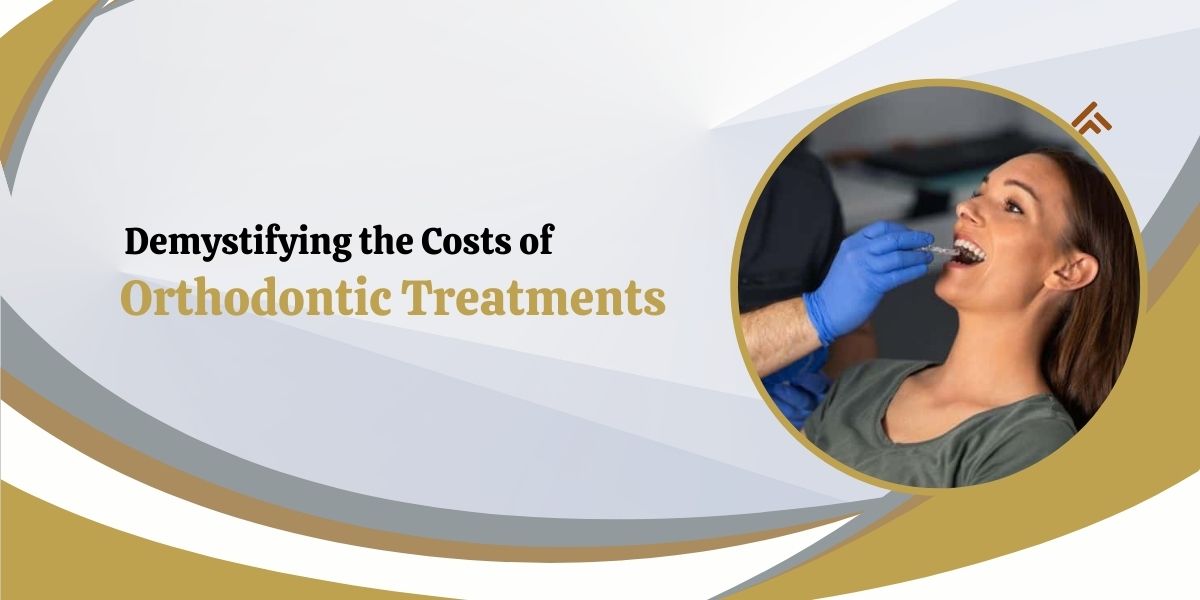If you or your child needs orthodontic work like braces or Invisalign, you may be wondering – how much does it cost? Orthodontic treatments vary widely in price depending on the type, extent of correction needed, and length of treatment. Understanding the factors that influence orthodontic treatment costs can help you plan and budget for care.
Orthodontics is the branch of dentistry focused on aligning teeth and correcting bite issues. The main types of orthodontic treatments include:
- Braces – Metal, ceramic, or lingual braces attached to teeth using brackets and arch wires. Most common treatment.
- Clear aligners – Removable plastic aligners like Invisalign that are switched out periodically to move teeth. More discreet option.
- Retainers – Removable or fixed retainers worn after braces to hold teeth in corrected positions.
- Headgear – Appliance worn outside the mouth, usually at night, provides traction to guide teeth/jaw growth.
- Expanders – Devices used to widen the upper or lower jaw. Can be removable or fixed expanders.
- Herbst appliances – Fixed functional appliance used to correct overbites.
- Lip/tongue appliances – Discourages bad oral habits contributing to tooth misalignment.
- Space maintainers – Hold space for missing primary teeth until the permanent tooth erupts.
Avoiding the Drill: 10 Pro Tips from an Emergency Dentist to Prevent a Mouth 911
Orthodontists may use a combination of appliances like braces, retainers, and expanders together depending on the specific orthodontic problem being treated, such as crowding, spacing, underbites, or overbites. The goal is to properly align teeth for oral health and an improved smile.
Types of Orthodontic Treatments
Braces: The traditional metal braces attached to teeth with brackets and wires typically range from $3,000-$7,000. Ceramic or lingual braces cost more, from $4,000-$8,000.
Invisalign: These clear plastic aligners cost between $3,500-$8,000 for a complete treatment. They are a more discreet option.
Retainers: Removable retainers to maintain alignments cost around $500-$1,000. Bonded permanent retainers placed behind teeth run $250-$600 per arch.
Key Cost Factors of Orthodontic Treatments
Extent of correction needed – More complex alignment issues require longer treatment plans that cost more. Simple straightening is cheaper than correcting crowding or bite issues.
Type of braces – Clear ceramic braces are more expensive than metal options. Lingual braces attached to the back of teeth have a higher cost.
Estimated treatment duration – Full braces treatments average 18-24 months. Quicker options like Six Month Smiles cost less overall.
Orthodontist expertise and location – An orthodontist with decades of specialty experience charges more than a new provider. Prices are usually higher in metro areas.
Insurance coverage – Many health and dental plans cover a portion of orthodontic treatment, offsetting costs.
Payment plans – Many orthodontists offer no-interest monthly payment plans to budget out the cost of treatment over 1-2 years.
Breakdown of typical costs for different types of orthodontic treatments:
Braces
- Metal braces – $3,000-$7,000 The most common and affordable option.
- Ceramic braces – $4,000-$8,000 Less visible but more expensive than metal.
- Lingual braces – $5,000-$10,000 Attached to the backs of teeth, nearly invisible.
Invisalign
- Full treatment – $3,500-$8,000 A series of clear, removable aligners.
Retainers
- Removable retainers – $500-$1,000 Worn after braces to maintain position.
- Permanent retainers – $250-$600 per arch
- Bonded wire placed behind the teeth.
Other Aligners
- Clear Correct – $2,000-$4,500 Clear, removable plastic aligners.
- Six Month Smiles – $2,000-$3,500 Shorter, cosmetic aligner treatment.
- Snap-On Smile – $2,000-$5,000 Removable retainer with fake teeth.
The specific cost for a patient will depend on the extent of correction needed and orthodontist fees. More complex treatments or longer time in braces results in higher overall costs. Location, expertise of the orthodontist, and insurance coverage also impact price.
Conclusion:
While the cost of private orthodontic treatments causes some sticker shock at first, understanding the factors that influence the price allows you to adequately save, budget, and plan for care. With insurance coverage and payment plans, orthodontic work can often cost less out-of-pocket than anticipated.







